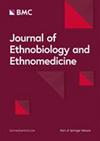The quest for Homer’s moly: exploring the potential of an early ethnobotanical complex
IF 2.9
2区 医学
Q1 BIODIVERSITY CONSERVATION
引用次数: 0
Abstract
The Homeric plant moly is a mysterious herb mentioned in Book 10 of the Odyssey. In the early 1980s, a pharmacological thesis to identify the plant was put forward for the first time, regarding the snowdrop (Galanthus nivalis L.) as candidate species. The proposal was inspired by the snowdrop’s acetylcholinesterase (AChE)-inhibiting properties and its alleged morphological reminiscence to other plants called moly by ancient Greek herbalists. Here, we draw from a compilation of literature from various disciplines, together with an understanding of the Homeric epic as a repository of information based on oral traditions, to (i) show that the assimilation of Homer’s moly to Galanthus nivalis is, at the very least, questionable and (ii) frame and support a new synthesis of the pharmacological thesis. We suggest that the uncertainty that revolves around the identity of Homer’s moly can be tied to an unnamed phylogenetic clade of closely related Mediterranean native species with AChE-inhibiting properties. Further, we speculate that Homer’s moly might represent an early record of an ethnobotanical complex, a sort of cultural taxon resulting from the cognitive crossbreeding of closely related taxonomic species that could have been interchangeably used due to their rough resemblance and common AChE-inhibiting properties. Such cultural taxon would have referred to the phytonym moly by the centuries-old oral traditions that ultimately crystallized in the poem. We also venture that sea daffodils (Pancratium spp.) could have greatly contributed to shaping the botanical archetype in the myth as we know it today.寻找荷马的钼矿:探索早期民族植物复合体的潜力
荷马史诗中的植物 moly 是《奥德赛》第 10 卷中提到的一种神秘草药。20 世纪 80 年代初,首次提出了一种药理学论文,以雪莲花(Galanthus nivalis L.)作为候选物种来鉴定这种植物。这一提议的灵感来源于雪莲花的乙酰胆碱酯酶(AChE)抑制特性,以及据称其形态与古希腊草药学家称为 moly 的其他植物的相似之处。在此,我们从不同学科的文献汇编中,结合对《荷马史诗》作为基于口头传统的信息宝库的理解,(i) 说明将荷马的 moly 与 Galanthus nivalis 相提并论至少是有疑问的,(ii) 构建并支持药理学论题的新综合。我们认为,围绕荷马莫利身份的不确定性可与一个未命名的系统发育支系联系起来,该支系由具有 AChE 抑制特性的密切相关的地中海本地物种组成。此外,我们推测荷马莫利可能代表了一个民族植物学复合体的早期记录,这是一种文化分类群,由密切相关的分类物种的认知杂交产生,由于其粗略的相似性和共同的 AChE 抑制特性,这些物种可以交替使用。这种文化分类法会根据几个世纪以来的口口相传来指代phytonym moly,而这些口口相传最终在这首诗中得到了具体体现。我们还大胆认为,海水仙(Pancratium spp.)
本文章由计算机程序翻译,如有差异,请以英文原文为准。
求助全文
约1分钟内获得全文
求助全文
来源期刊

Journal of Ethnobiology and Ethnomedicine
PHARMACOLOGY & PHARMACY-
CiteScore
7.30
自引率
16.70%
发文量
66
审稿时长
>12 weeks
期刊介绍:
Journal of Ethnobiology and Ethnomedicine publishes original research focusing on cultural perceptions of nature and of human and animal health. Journal of Ethnobiology and Ethnomedicine invites research articles, reviews and commentaries concerning the investigations of the inextricable links between human societies and nature, food, and health. Specifically, the journal covers the following topics: ethnobotany, ethnomycology, ethnozoology, ethnoecology (including ethnopedology), ethnogastronomy, ethnomedicine, ethnoveterinary, as well as all related areas in environmental, nutritional, and medical anthropology.
Research focusing on the implications that the inclusion of humanistic, cultural, and social dimensions have in understanding the biological word is also welcome, as well as its potential projections in public health-centred, nutritional, and environmental policies.
 求助内容:
求助内容: 应助结果提醒方式:
应助结果提醒方式:


